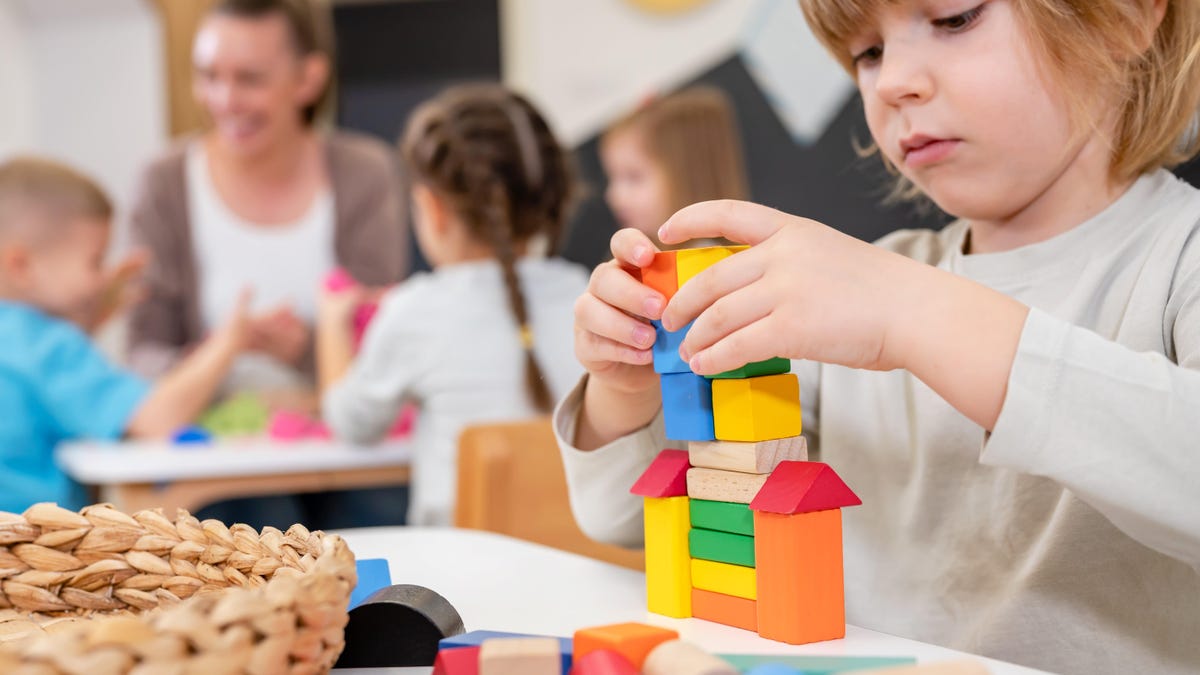What It Means to Be a ‘Twice Exceptional’ Kid (and How to Support Them)
There is no clear definition of what it means to be “gifted”—and gifted identification can vary widely from state to state and even district to district. But when a child is identified as “gifted” and as having any condition...

There is no clear definition of what it means to be “gifted”—and gifted identification can vary widely from state to state and even district to district. But when a child is identified as “gifted” and as having any condition that would qualify them for special education services (such as a learning difference like ADHD, autism, or dyslexia, or mental health conditions like anxiety, they are considered “twice exceptional,” or “2e.” And kids who are twice exceptional and also have cultural, gender, or economic differences might be called 3e. We spoke with Julie Skolnick, founder of With Understanding Comes Calm and author of the upcoming book Gifted and Distractible: Understanding, Supporting, and Advocating for Your Twice Exceptional Child about how to best support 2e and 3e kids.
The unique challenges that 2e kids face
The first and most glaring challenge many 2e kids face is that they feel different. “These kids often truly run into school the first day with this rage to learn and suddenly they look around them or are so beyond where their peers are,” Skolnick says. She says the qualities a gifted person possesses are not only that they may be intellectually advanced but that they also have emotional, sensory, psychomotor, and imaginational intensity. These qualities may or may not overlap with other conditions such as sensory processing disorder (SPD), autism, or ADHD. Skolnick also says there is “interesting research happening now on increased crossover of gifted people and gender fluidity.” They may often have had asynchronous development either in that they are advanced in some areas and behind in others, and often feel perfectionistic, which can be associated with anxiety.
Besides feeling different, which can have self-esteem and social challenges, 2e kids can also struggle with their overexcitabilities or sensitivities. Examples Skolnick gives are the cafeteria, which she says is “a bastion of sensory craziness” with all the sights, smells, tastes, and social dynamics, and, for similar reasons, the bus or carpool. Some kids even “feel other people’s feelings,” which can prove challenging in a busy school. These various stressors can leave a kid feeling like their bucket of resilience is empty, Skolnick says.
Finally, the combination of being both gifted and having learning or other differences can prove challenging to reconcile. Having to navigate learning in a different way or learning well one way but not another, such as a child who is an auditory learner but who is taught visually, can cause turmoil and observable behaviors from the parent or teacher’s perspective.
How to accommodate a 2e kid at school
Skolnick says that whether your district treats it as such or not, “gifted is special education,” and gifted students require individualized accommodations. Helping your child’s teacher understand your kid can be tricky, so Skolnick suggests making a one page sheet on your child, especially if they have a lengthy individualized education program (IEP) or if they do not have a gifted-specific IEP (called a “GIEP” in some states). This one page should include your child’s strengths, challenges, what differentiation works and does not work, and one thing you want them to know. Skolnick says it should be something that “broadens their perspective” about your child, such as that they seem to be standoffish, but do really crave connection. She says to include a photo of your child “in the flow, doing what they love,” such as building a LEGO set.
From there, appropriate differentiation is important, though it can be difficult. Skolnick says that while gifted children require interventions on a case by case basis, the best thing for all involved is to “Try to create a collaborative atmosphere” with school staff and try to “give each other the benefit of the doubt.” You all want what’s best for your child. “Many districts think an AP course addresses giftedness but it does not,” Skolnick says. A child who is sitting “face forward and turning in work” is not likely getting their needs met. They do not need more work, she says, but “deeper work” where the teacher “asks questions to help the kid dig in deep and delve into a topic.” They also need to understand why the work is meaningful in order to feel motivated to do it.
If they are able to articulate it, which depends on many factors including their age, Skolnick says, “you have to include your child in the conversation” and ask, “what’s going to make this better for you?” They may be able to identify certain triggers for their challenging behaviors, such as too-bright fluorescent lights or being asked to teach the class when they do not find that helpful for their own learning. If you still feel your child’s needs aren’t being met, Skolnick suggests hiring an advocate who specializes in IEPs and gifted children.
How to help your 2e kid at home
It’s important to remember that “behavior is communication,” Skolnick says, and that caregivers need to “react to the trigger, not the behavior.” The environment needs to change, not the kid. She says that just like you’d make sure a classroom is clear of obstacles for a blind child, we need to accommodate invisible “disabilities” and needs. Congratulate your child on advocating for their needs with their behavior and praise them for choosing not to engage in negative actions. If a kid runs to their room during conflict, congratulate them for not upsetting the table or yelling at their sister. Model this internal thinking in yourself so your child can articulate it for themselves, too. For example, say, “I’m feeling overwhelmed and like I might say something I regret so I’m going to take a break.”
Both at school and home, focus on connection. Skolnick says, “2e kids are driven by connection, which can be paradoxical because 2e kids have a hard time feeling connected.” Engage in their interests and work on establishing routines that work for your child.
The best way for a child to succeed at home or at school is to feel like their adults accept them just as they are. “When they’re in the presence of somebody who gets them,” Skolnick has seen a reduction in learning difficulties or acting-out behaviors. 2e people, adults and kids often feel emotional when they’re finally understood. Skolnick says they might internalize that, “If someone actually sees me and actually likes me, celebrates me, I can stop fighting against myself.” This leads to healthier and happier 2e adults.

 JimMin
JimMin 
































